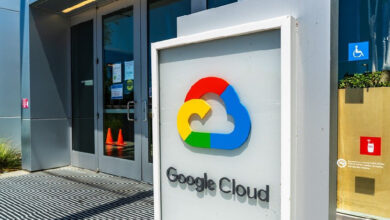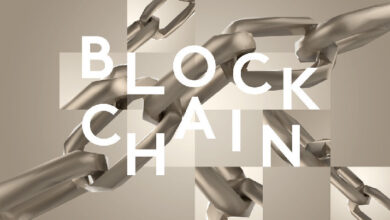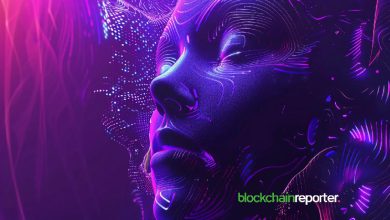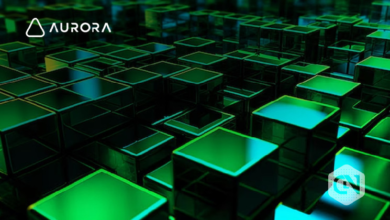AI Could Revolutionize Blockchain, but Not Yet
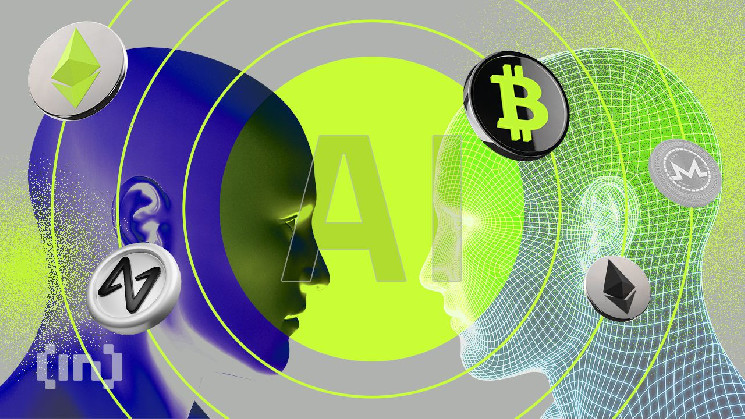
Blockchain
Crypto and AI have been fighting a battle for relevance. In recent months, AI has come out as the clear winner. What if we could merge the two?
AI is currently the most popular kid in the playground. A recent JP Morgan survey reached out to 835 institutional traders in 60 markets. In 2022, blockchain and distributed ledger technology were deemed second to mobile apps in key technologies expected to shape the future, alongside machine learning and AI.
However, this year, 53% of respondents identified AI as the most exciting technology for the future. Only 12% believed blockchain would have the most impact. To top it off, a huge 72% had no plans to trade crypto.
The AI hype is obvious in the crypto markets too.
In the first few weeks of the year, the crypto markets went AI-crazy. Since then, the market has started to cool. Most of the most popular AI tokens by 24-hour market volume are down from the year’s ATH. SingularityNET (AGIX) is down approximately 23% since its peak on Feb 7. Fetch (FET) also peaked on Feb 7 and is down approximately 16% since then.
Most are still trading with momentum, and investors still look bullish that prices will increase again.
But how much of this market pump is based on real technology? Or is this a classic case of herding? (Herding is when investors imitate other investors instead of making independent decisions, which can create a feedback loop where one investor’s actions influence others and create a self-reinforcing trend.)
How Can We Augment Blockchains With AI?
There have been disagreements about how much you can integrate blockchain and AI. Fantom founder Andre Cronje recently said it was like trying to “mix oil and water.” There is also a significant risk that investors do not fully understand the technology. First of all, you cannot put AI into a blockchain. However, it can significantly enhance blockchain’s utility and capabilities.
“Most AI tokens today are using decentralized platforms to leverage AI features, including models, data, and other features focused on things such as data analytics, bots, and decision execution,” says Tim Tully, co-founder and CEO at Zelcore.
However, most AI is based on machine learning and needs a large dataset to effectively learn and make accurate predictions or decisions. The more complex the task, the larger the dataset needs to be.
“Blockchain will never contain all the necessary data to present the complete picture (think NFT serial number on blockchain, image on a website with data backend). It is very likely that AI will be used for indexing that supplemental data to the blockchain record.”
From Smart Contracts To “Intelligent Contracts”
AI can also improve the accuracy and reliability of smart contracts on the blockchain. Machine learning algorithms can analyze detail, identify patterns, learn from previous transactions, and analyze the performance of smart contracts in real time.
These developments may usher in a new era of “intelligent contracts” (IC), says Bill Xing, head of financial products at Bybit. But there are drawbacks. “The main appeal of smart contracts is their “trustless” nature, so proponents of the IC model will need to answer why a user would prefer to trust an AI over a trustless, verifiable smart contract.”
Anyone who has interacted with AI-based tools knows that they can be wrong. In the case of self-driving cars, they can be catastrophically so. Whether it’s strange-looking hands from AI image generators or factually incorrect outputs from ChatGPT, we still have a long way to go.
“In terms of integration, an AI could interact with blockchain-based systems, including smart contracts and data storage, to create efficiencies across the modular components of the system — for example, interpreting vast amounts of decentralized data and coming up with solutions at speed.”
For The Moment, It’s More Hype Than Substance
Most of the people BeInCrypto spoke to agreed that the current market pump was more hype than substance. Traders were mostly excited by the potential for easy or big returns. Most people don’t appear to be reading the project’s whitepapers.
“The recent spike in prices of AI-related digital assets has been largely driven by speculation rather than real technological breakthroughs, though those will come,” continues Xing.
“This has caused prices to skyrocket quickly, leading to a hive of trading activity where traders (and copy traders!) continue to find rich pickings as hype cycles come and go. However, long-term investors should be cautious and always look into each token project carefully before making any decisions about how heavily they should invest their funds into them.”
ChatGPT is only a glimpse of the future, says Aaron Rafferty, CEO at StandardDAO and Co-Founder of BattlePACs. But we shouldn’t become delirious or complacent.
“The hype has also led to many tokens without solid use cases or teams behind them. Some AI crypto projects have been around for 5+ years. However, they are not the same teams launching the most innovative AI tech today. We will see a real use-case for this merge, but expect it to come from a number of new players, not old. Invest wisely and remember, the crypto market is inherently speculative.”


